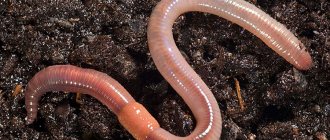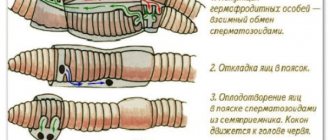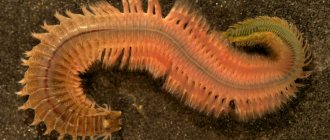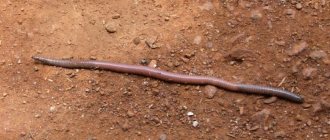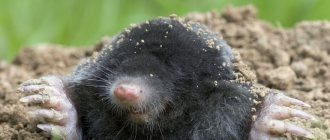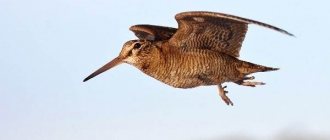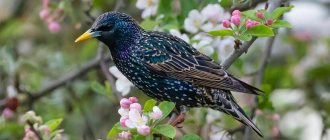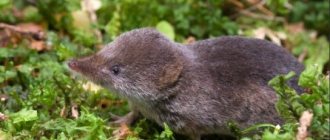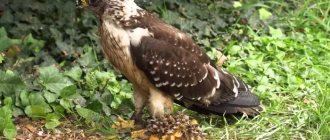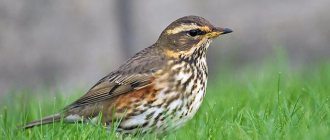Many people underestimate the importance of the work of earthworms. These representatives of the invertebrate kingdom are best known for crawling out of the ground in large numbers after heavy rain. They are often used as bait by numerous fishing enthusiasts. Darwin also noted the fact that worms perform an important function in nature, acting as a kind of agricultural technicians. In the process of creating an extensive system of tunnels, which the earthworm digs through, excellent aeration is formed by supplying air to the inner layers of the soil.
Thanks to excellent aeration, the respiratory activity of many plants is facilitated. Feeding on organic matter and waste, worms ensure the grinding of soil components, enriching them with their secretions. The amazing ability of representatives of this species is the ability to disinfect large areas of soil, sterilizing it from harmful bacteria. Thanks to countless holes, forming a kind of capillary system, ideal drainage and aeration of the soil is ensured.
External structure
Body
The earthworm, or earthworm (Fig. 51) has an elongated body, 10-16 cm long. In cross section, the body is round, but, unlike roundworms, it is divided into 110-180 segments by annular constrictions.
Each segment has 8 small elastic bristles. They are almost invisible, but if we run our fingers from the back end of the worm's body to the front, we will immediately feel them. With these bristles, the worm rests against uneven soil or the walls of the passage when moving. Regeneration in earthworms is well expressed.
Body wall
If we take a worm in our hands, we will find that its body wall is wet and covered with mucus. This mucus makes it easier for the worm to move through the soil. In addition, only through the moist body wall does the oxygen necessary for breathing penetrate into the worm’s body.
The body wall of an earthworm, like that of all annelids, consists of a thin cuticle, which is secreted by a single-layer epithelium.
Under it there is a thin layer of circular muscles, and under the circular muscles there are more powerful longitudinal muscles. By contracting, the circular muscles lengthen the body of the worm, and the longitudinal muscles shorten it. Thanks to the alternating work of these muscles, the worm moves.
Sense organs
The nervous system and sensory organs of earthworms are quite well developed. In the anterior segment there is a peripharyngeal ring (a collection of nerve cells). Two nerve trunks extend from it, on which a separate nerve node is developed in each segment. This is called the ventral nerve cord. Thanks to it, the coordinated functioning of organs and the independence of body segments is ensured.
Worms do not have separate sense organs, but the animal senses touch through sensitive nerve cells of the skin, distinguishes between light and darkness, smells, and the like. Feeling slight vibrations in the soil, the animal immediately seeks to hide in a hole. The body's reaction to external stimuli in worms is quite large and is called a reflex.
Habitat
Earthworm and its movement in the soil. The anterior end of the earthworm's body from below.
During the day, earthworms stay in the soil, making tunnels in it. If the soil is soft, the worm penetrates it with the front end of its body. At the same time, he first compresses the front end of the body so that it becomes thin, and pushes it forward between the lumps of soil. Then the front end thickens, pushing the soil apart, and the worm pulls up the rear part of the body.
In dense soil, the worm can eat its way through the soil through its intestines. Lumps of soil can be seen on the surface of the soil - they are left here by worms. After heavy rain has flooded their passages, the worms are forced to crawl out to the surface of the soil (hence the name - earthworm). In summer, worms stay in the surface layers of the soil, and in winter they dig burrows up to 2 m deep.
Earthworm: description
Earthworms belong to the suborder of oligochaete worms, representing an independent order “Haplotacidae”. Many European species belong to the family "Lumbricidae", which includes about 200 species. The English naturalist Charles Darwin was the first to talk about the purpose of earthworms in 1882.
After precipitation, the minks of these creatures are flooded with water, and they have to crawl out so as not to suffocate, as a result of which they received such an interesting name. Being deep in the soil, they enrich the soil with humus and saturate it with oxygen, which leads to an increase in the yield of agricultural and other crops.
Europeans at one time dried worms and ground them into powder, after which they applied this powder to all kinds of wounds to heal them faster. Worms were also infused, after which tuberculosis and even cancer were treated with tinctures. A decoction of worms relieved ear pain. They were also boiled in wine and jaundice was treated with this decoction. They were infused with oils and tried to fight rheumatism with this tincture.
In the 18th century, a doctor from Germany used powder from crushed worms in the treatment of epilepsy. Such worms have been actively used in folk medicine in many countries in the treatment of various ailments, including the treatment of atherosclerosis. Traditional healers of Russia practiced the treatment of various eye diseases, including cataracts.
Interesting moment! The aboriginal people of Australia still eat certain types of large worms, and the Japanese even today believe that urinating on an earthworm can increase the size of their manhood.
Invertebrates are divided into 3 main natural species, depending on the nature of their habitat:
- Epiqeic - found in the upper layers of the earth and do not dig holes.
- Endqic - live in branched horizontal burrows, which they dig themselves.
- Anecic - prefer to feed on fermented organic matter, while digging vertical passages.
Appearance and features
Depending on the variety, the length of earthworms can reach up to 2 centimeters, and sometimes up to 3 meters. In this case, the number of segments can range from 80 to 300 pieces, and the segments themselves are covered with short hairs, the number of which can vary from several units to several dozen pieces. When moving, the hairs serve as a kind of support for the worms. In each segment you can find:
- Skin cells.
- Longitudinal muscles.
- Liquid filling the cavity.
- Circular muscles.
- Bristles.
When different types of muscles work, worms can not only move through burrows, but also dig holes due to the work of the circular muscles, which allows the worms to push the soil to the sides. Oxygen saturation is carried out due to the work of sensitive cells of the skin. In this case, the skin is covered with a layer of mucus, which contains various enzymes and antiseptics.
Worms have a closed circulatory system and consists of two main blood vessels: dorsal and abdominal. The color of the blood is red and it also flows through ring vessels that are connected to each other by a system of capillaries. Some vessels participate in the movement of blood, so they can contract and pulsate.
The digestive system includes the mouth, pharynx, esophagus and gizzard. First, the food ends up in the pharynx, and then through the chain it enters the muscular stomach. The digestion process takes place in the midgut, after which nutrients are absorbed and the remainder is excreted through the anus. The nervous system of the arthropod includes the ventral nerve cord, which is connected to the peripharyngeal ring, as well as a pair of nerve ganglia. This structure of the nervous system allows individual segments to gain independence, while all organs work in harmony.
The excretory system consists of thin curved tubes, one end of which goes out. If too many toxins have accumulated, they are eliminated through excretory pores, as well as metanephridia. Worms do not have visual organs, but they have light-sensitive cells on their skin. The skin also contains other organs. Worms have unique regenerative qualities that allow them to restore lost body parts.
►The amazing inhabitants of the “Earthworms” garden (documentary)
Habitat
There are worms that live in the thickness of the earth, where they find food for themselves, and also worms that find food for themselves on the surface of the earth and do not burrow into the ground deeper than a couple of tens of centimeters. As a rule, this type of worms is called soil-litter worms.
Earthworms are capable of descending to a depth of 1 meter, or even deeper. It is not so easy to meet them on the surface of the earth, since even the mating process takes place in the thickness of the earth.
Earthworms live everywhere, with the exception of areas with permafrost. Any species of worms prefer to live in conditions where the soil is waterlogged, so they are much more likely to be found near bodies of water, in swampy areas, and in areas with a humid climate.
Interesting to know! As a result of human economic activity, many species of worms are found today in larger areas, compared to several centuries ago, when only a few species were found in the same vast areas.
These invertebrates quickly adapt to different climatic conditions, as well as the nature of the soil. They feel comfortable in green areas, representing both coniferous and deciduous forests. With the onset of heat, they rise from the depths closer to the surface of the earth.
What do they eat?
Their diet consists of half-rotten remains of various plants, which end up in the mouthparts of the worms along with the soil. The soil, passing through the midgut, is mixed with organic components. As a result, the soil that is wormed out contains 5 times more nitrogen, 7 times more phosphorus and 11 times more potassium, compared to soil that has not undergone the worm process.
In addition to rotting plant debris, earthworms feed on rotting animal remains, lettuce, manure, insects, watermelon rinds, etc. It should be noted that worms avoid components with alkaline and acidic reactions. The diet of worms depends on their variety. Worms that are active at night feed exclusively at night. As a rule, they eat exclusively the pulp of the leaves, leaving the veins.
In any case, in order to digest food, they begin to dig the ground, since food is always mixed with soil. Red worms prefer to be on the surface of the earth to find food for themselves. If the soil contains a low concentration of organic matter, then the worms have to migrate in search of more suitable conditions for their life.
It wouldn't hurt to know! In a day, earthworms eat as many food components by weight as they weigh themselves.
Earthworms are quite slow creatures, so they do not have time to process plant food on the surface of the earth. They drag food items into their burrows, saturate them with organic matter and store them in order to feed the entire family. Some individuals dig separate burrows for themselves to store food and often visit these storage facilities. Due to the special structure of the stomach, food is crushed into very small fragments.
Leaves for spineless animals serve not only as a source of food. They use leaves to close the entrances to their burrows. In addition to leaves to cover the entrances to burrows, dried inflorescences, grass stems, feathers, fragments of paper, wool, etc. can be seen near their burrows. Therefore, it is not at all surprising if remains of leaves or bird feathers stick out from their burrows.
Behavior and lifestyle
Earthworms prefer to lead an underground lifestyle, creating underground burrows up to 1 meter deep, although there are species that go deeper than 8 meters. In addition to safety concerns, the worms mix and moisten the soil. They push some of the soil to the sides, and swallow some of it in order to enrich it with useful components that increase the yield of various crops.
Due to the presence of a thin layer of mucus on the surface of the body, worms easily move through even the hardest soil. The skin is so thin that it dries quickly when exposed to sunlight, so they cannot remain in such conditions for a long time, otherwise they may die. In this regard, earthworms can be seen either in cloudy weather or at night.
It is not at all surprising when, at night, entire clusters of earthworms are found on the ground. To appear on the surface of the earth, they stick out part of their body from their burrow. After reconnaissance, if nothing threatens, the worms completely crawl out of their holes in search of food.
The body of earthworms is quite elastic and can stretch without problems. The bristles perform exclusively protective functions. To understand this, it’s worth trying to pull an earthworm out of its hole. It is not so easy. Of course, if you apply some effort, you can, although you can tear the worm as it tries to hold on to the edges of the burrow with the help of its bristles.
If we talk about the benefits of earthworms, they are so significant that you can’t even imagine how such creatures cope with such enormous, almost invaluable work. With the onset of cold weather, the worms sink to a considerable depth, but with the arrival of spring and the gradual warming of the soil, the worms begin to move along their passages, beginning their labor activity for the benefit of humanity.
Social structure and reproduction
Worms are hermaphrodites, since each individual has both male and female reproductive organs, and the process of reproduction is carried out through cross-fertilization. During the fertilization process, the worms exchange sperm.
Interesting moment! The mating process of these invertebrates lasts up to 3 hours. The process begins with individuals climbing into holes with their relatives and mating 17 times in a row, with each sexual act lasting up to 1 hour.
The reproductive system of worms is located in the front part of the body, and the sperm are located in the seminal receptacles. When the mating process takes place, 32 segments secrete a special mucus that promotes the formation of an egg cocoon, consisting of a protein liquid necessary for the development of embryos.
The spineless lay eggs in this cocoon, and after a couple of weeks small worms appear in it, protected from all kinds of external influences. After a few months, the small worms grow to adult size. As a rule, no more than one cub is born, whose life expectancy is no more than 7 years.
The Taiwanese species "Amynthas catenus" lacks reproductive organs, so their reproduction process is associated with parthenogenesis. As a result, up to 100% of the genetic material is transmitted to the offspring, which leads to the birth of clones. The parent in this case is both father and mother.
Natural enemies of earthworms
Earthworm populations are greatly influenced by various natural phenomena such as floods, frosts, droughts, etc., as well as by various predators whose diet includes earthworms.
These predators include:
- Krotov.
- Small predators.
- Amphibians.
- Centipedes.
- Feathered.
- Horse leeches.
Especially large quantities of worms are eaten by moles, who also make reserves for the winter. Moles simply bite off the worms' heads or severely damage them so that the worms cannot crawl away. Large red worms are considered the most popular for moles.
Small mammals also prey on worms. Frogs hunt for worms at night, waiting for them at their burrows. As soon as the worm's head is above the ground, the frog is right there.
For many birds, earthworms are a source of food. Birds have quite sharp eyesight and can easily see the tips of worms that emerge from burrows. Therefore, birds manage to pull out a worm every morning with the help of their sharp beak. Birds not only hunt adult individuals, but also pick up cocoons with eggs.
Horse leeches, which are found in any body of water, do not attack people or large animals because their jaws are quite blunt. They cannot bite through thick skin, but they can easily deal with worms. At autopsy, the remains of worms were found in the stomach of these creatures.
Digestive system
Internal structure of an earthworm.
Digestive, nervous, circulatory system of an earthworm. The mouth is located at the anterior end of the earthworm's body; the anus is on the back.
The earthworm feeds on rotting plant debris, which it swallows along with the soil. It can also drag fallen leaves from the surface. Food is swallowed as a result of contraction of the muscles of the pharynx. The food then enters the intestines. Undigested remains, along with soil, are expelled through the anus at the rear end of the body.
The intestines are surrounded by a network of blood capillaries, which ensures the absorption of nutrients into the blood.
Position in taxonomy (classification)
Earthworms belong to the phylum Annelids, the class Beltworms, and the subclass Oligochaetes.
On this page there is material on the following topics:
Download earthworm description and structure
Body wall of all worms
Earthworm Report
Create an essay on a small earthworm
Earthworm body shape description
Questions about this material:
What does the body wall of an earthworm consist of?
What functions does blood perform in an earthworm?
Why does an earthworm develop a circulatory system?
How do the end products of earthworm excretion occur?
How does the nervous system of an earthworm work?
Whose sperm fertilizes the eggs of a hermaphroditic earthworm?
Create a food network where the earthworm can enter.
Circulatory system
All secondary cavities have a circulatory system, starting with annelids. Its occurrence is associated with a mobile lifestyle (compared to flat and protocavitary worms). The muscles of annelids work more actively and therefore require more nutrients and oxygen, which the blood brings them.
The earthworm (Fig. 52) has two main blood vessels: the dorsal, through which blood moves from the rear end of the body to the front, and the abdominal, through which blood flows in the opposite direction. Both vessels in each segment are connected by ring vessels.
Several thick annular vessels are muscular; due to their contraction, blood moves. Muscular vessels (“hearts”) located in segments 7–11 push blood into the abdominal vessel. In the “hearts” and spinal vessels, valves prevent blood from flowing back.
From the main vessels, thinner ones depart, which then branch into the smallest capillaries. These capillaries receive oxygen through the surface of the body and nutrients from the intestines. From the capillaries that branch in the muscles, carbon dioxide and decay products are released.
Blood moves all the time through the vessels and does not mix with the cavity fluid. Such a circulatory system is called closed. Blood contains hemoglobin, which is able to carry more oxygen; she is reddish.
A closed circulatory system allows you to significantly increase your metabolic rate. In annelids it is twice as high as in flatworms, which do not have a blood pumping system.
Internal secretion
Special substances – hormones – are responsible for the chemical stimulation of individual body systems and the manifestation of the vital activity of the body. The process of their formation is called internal secretion. Vertebrates have an endocrine system (its glands are the adrenal glands, the pituitary gland, and the thyroid gland). Worms do not have such glands.
The endocrine organs of invertebrates are different parts of the nervous system. For example, adrenaline (a nerve agent that moves the muscles of the walls of blood vessels) is produced by the ganglia of the ventral nerve cord. And in higher vertebrates, adrenaline is produced in the central part of the adrenal glands.
The nerve cells of the suprapharyngeal ganglion of worms perform an intrasecretory function. They regulate the activity of the gonads and are activated during regeneration processes.
Reproduction and development
Earthworms are hermaphrodites. During the process of copulation of two individuals, mutual fertilization occurs, that is, the exchange of male gametes, after which the partners separate.
The ovaries and testes are located in different segments at the anterior end of the body. The location of the reproductive organ system is shown in Figure 51. After copulation, a belt is formed around each worm - a dense tube that secretes the cocoon shell.
The cocoon receives nutrients that the embryos will subsequently feed on. As a result of the expansion of the rings located behind the cocoon, it is pushed forward towards the head end.
At this time, 10-12 eggs are laid through the opening of the oviduct into the cocoon. Further, when the cocoon moves, sperm from the sperm receptacles received from another individual during copulation enters it, and fertilization occurs.
After this, the cocoon slides off the worm and its holes quickly close. This prevents the eggs it contains from drying out. The development of earthworms is direct, that is, they do not have larvae; a young worm hatches from the egg.
Substrate preparation
Since worms can only eat softened food, waste requires preliminary preparation. Thanks to composting (this is the process of primary decomposition of organic matter), a nutritious substrate for pets is produced from any waste. The decomposition time of individual types of waste differs, and the farmer must take this into account so that the feed has time to ripen on time. Grinding speeds up decomposition time.
Table No. 1. Waste composting
| № | Name of waste | Composting time | Note |
| 1 | Plant residues: tops, grass, foliage, weeds, etc. | Softens in 1-3 months | Avoid putting poisonous or overly aromatic herbs into the composter. |
| 2 | Paper | No preparation required | Soak with clean water before placing in the composter. |
| 3 | Natural fabrics, hard plant debris (straw, husks, husks), sawdust, branches | 3 – 12 months | The waste is rich in nitrogen and takes a long time to decompose. It is good to mix them with vegetable and kitchen scraps, manure |
| 4 | Vegetables, berries, fruits, kitchen cleaning, leftover food | 3 – 14 days | Juicy waste loses a lot of moisture during primary decomposition, and the compost yield from it is small |
| 5 | Manure, bird droppings | 3-6 months (primary decomposition occurs when the temperature rises to 75°C and releases gases dangerous to worms) | It is necessary for the “burning” process to be completed in the substrate. After 2 years of storage, humus from manure is not suitable for worm food. |
Composting creates conditions where food decomposes as quickly as possible. This is a closed space with limited air access, humidity from 60-70% and temperature not lower than 15-25°C. The substrate is periodically mixed (for uniform composting) and moistened. In moderation, ash or chalk is added to the substrate for deoxidation.
Soft foods soften after freezing or heat treatment (vegetables, fruits). EM technologies also speed up composting.
